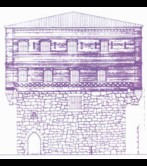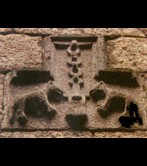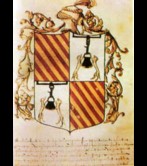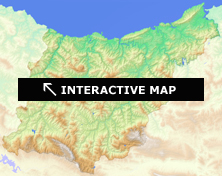Lords of the Land
Gipuzkoa in the Middle Age
Mediaeval Gipuzkoa displayed some characteristics that distinguished it from the feudal model prevailing in the rest of Western Europe. Juridically it was much like anywhere else, as a social model that previously had not existed soon became the dominant one. This rapid evolution – bearing in mind the slowness of change in that era – didn’t occur without creating serious tension that would give rise to a social, political, judicial, economic and geographical organization that was unusual in the European context, and different from other Basque territories.
The Ancestral Home and Family Bounds
Social structure was centred on the solar (ancestral home) and family relationships. The fundamental element is the ancestral home. It is geographically and judicially independent and forms the basis for an extended family that is united, above all but not exclusively, by blood, and with a pronounced internal hierarchy. Family names derive from the name of the ancestral home. Not all ancestral homes have the same economic and social value. Geographically there is an extended organization of communities, known as valleys (although they don’t always correspond to physical valleys) in which these ancestral homes are grouped together in hamlets around a church. At the same time groups of relatives come together in lineages led by the head of the family. These are the so-called Mayores Parientes (equivalent to clan chiefs).
To learn more about this subject: "Tower houses and lineages of Gipuzkoa " (Bertan Collection).
Lineages and Factions
The heads of families militarily, economically and judicially control more or less defined territories and above all the people who live in them. They are “men of war”, leaders of armed men, and the more men at their command, the stronger they are, and “men of the soil”, landowners or people with rights and income from pastures, woods, estates, foundries, mills, bridges, roads and even parish churches and hermitages, or people with noble offices, such as judges. This double power is symbolised by the tower house.
The lineages group together to form camps or factions. In Gipuzkoa these were the Oñacino (led by the Lazkano family, whose ancestral home bore the same name) and the Gamboino (led by the Olaso family from Elgoibar), which were in conflict with each other and at same time connected to factions in neighbouring areas.





